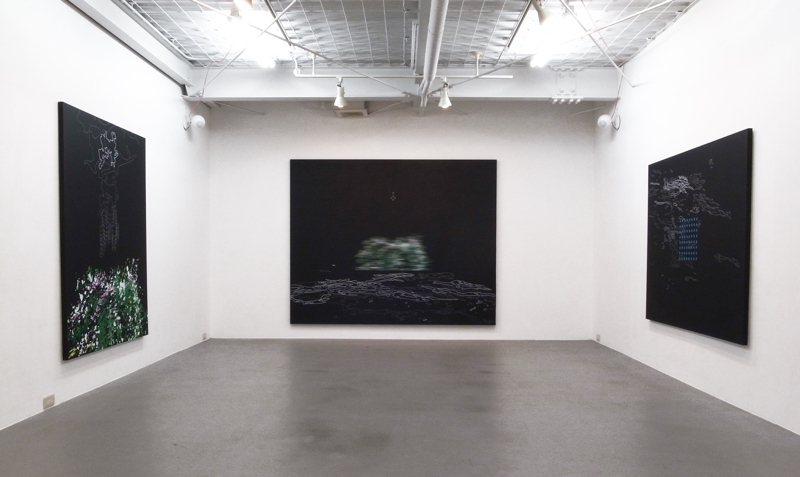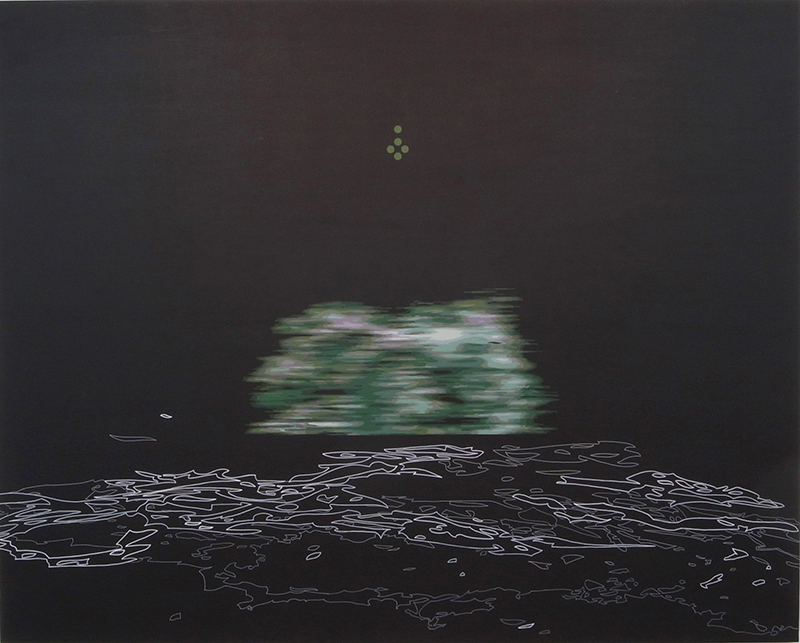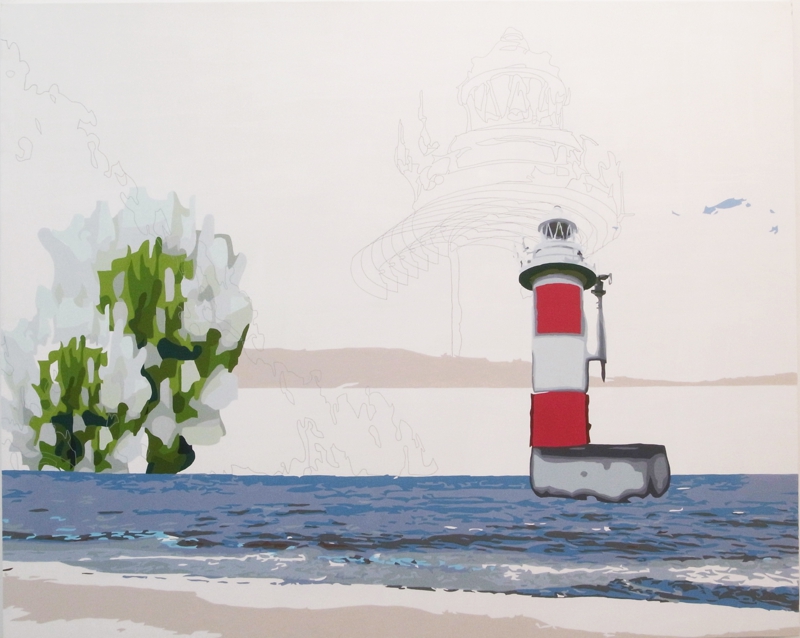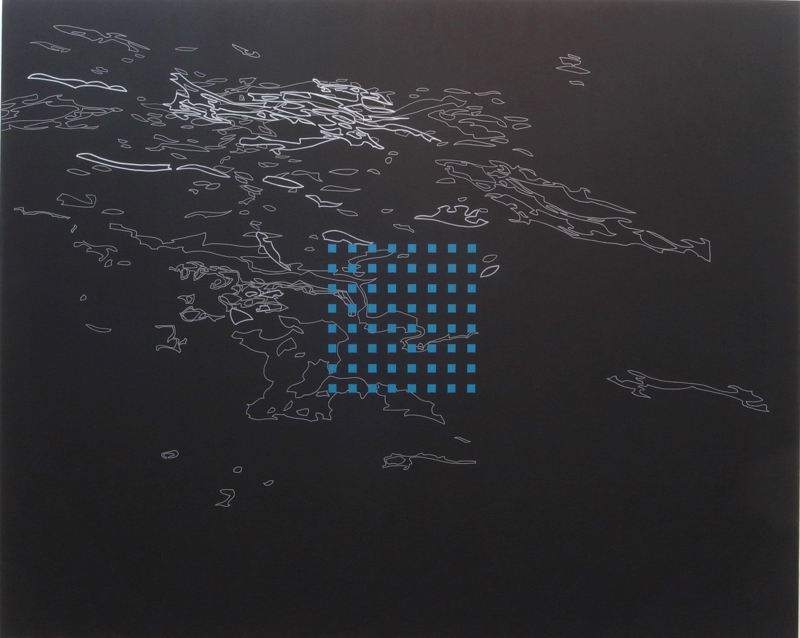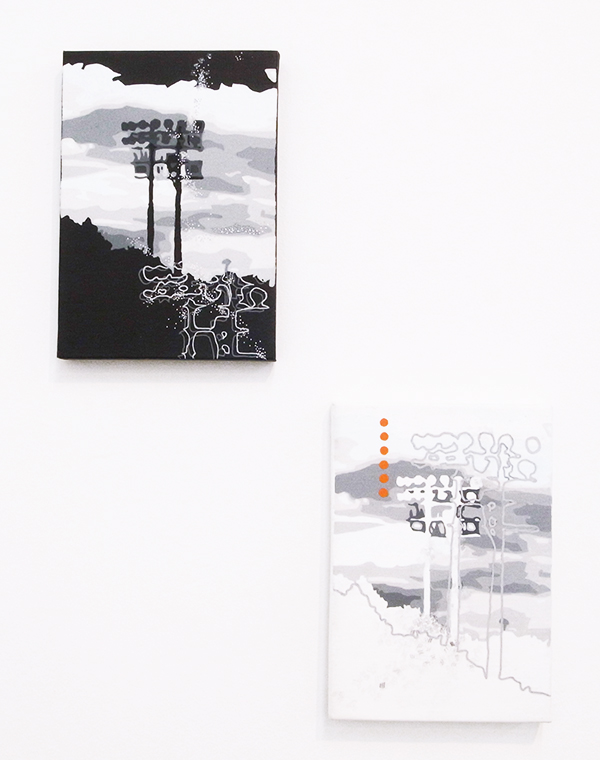
2012 November galerie 16 (Kyoto)
私達が、波音、潮の香、木々の音・鳥の声に安堵感を感じるのは、生命反応プログラムが、自然環境に共振するという理由だけではない。 この心地よさは例えばエレクトリックミュージックに感じることと構造は似ているはずだ。 差異はあるにしても、生成し続ける都市を中心とした人工の環境、サイバースペースも広義の環境へに取り込みが進行し、自然/人工さらに、 人体をも浸透して機能していることを強く感じる一方、心のレイヤーでは漠とした「喪失感」や「不在」は心の澱として存在する。 芸術はそれらを解決することを求めず、共有を可能にする。 それら「喪失感」や「不在」を「普遍的な喪失感・不在」に変換することで、変化し続けるなかに身を置き、未来を視野に入れた積極的な表現に変化するのではないだろうか。
The reason we feel relief from the sound of waves, the scent of the tide, and the sound of trees and birds is not only because our life response program resonates with the natural environment. The structure of this comfort should be similar to that of electric music, for example. Although there are differences, the artificial environment centering on the city that continues to be generated, and cyberspace is being incorporated into the environment in the broad sense of the term, and we strongly feel that it permeates and functions in the natural/artificial and even the human body, while a vague sense of “loss” and “absence” exists as mental lees in the layers of our minds. Art does not seek to resolve them, but allows them to be shared. By transforming these “feelings of loss” and “absence” into “universal feelings of loss and absence,” we can place ourselves in the midst of continuous change and transform them into positive expressions with an eye toward the future.
“counterpoint” 1,818(h)×2,273(w)mm (F150) acrylic paint, marker pen(pigment) (2012)
“萩(hagi)” 1,620(h)×1,303(w) mm (F100) acrylic paint , marker pen(pigment) (2012)
“sea view” 1,303(h)×1,620(w)mm (F100) acrylic paint, marker pen(pigment) (2012)
「椿」(2点組) “Tubaki” 727(h)×606(w)mm (F20), 727(h)×1,167(w)mm (M50) acrylic paint , marker pen(pigment) (2012)
“Wave” 1,303(h)×1,620(w)mm (F100) acrylic paint, marker pen(pigment) (2012)
